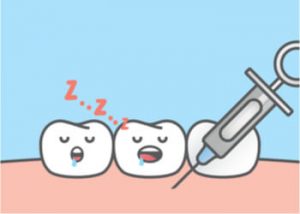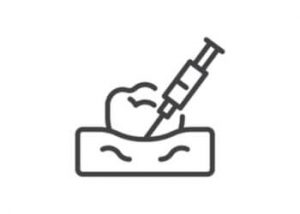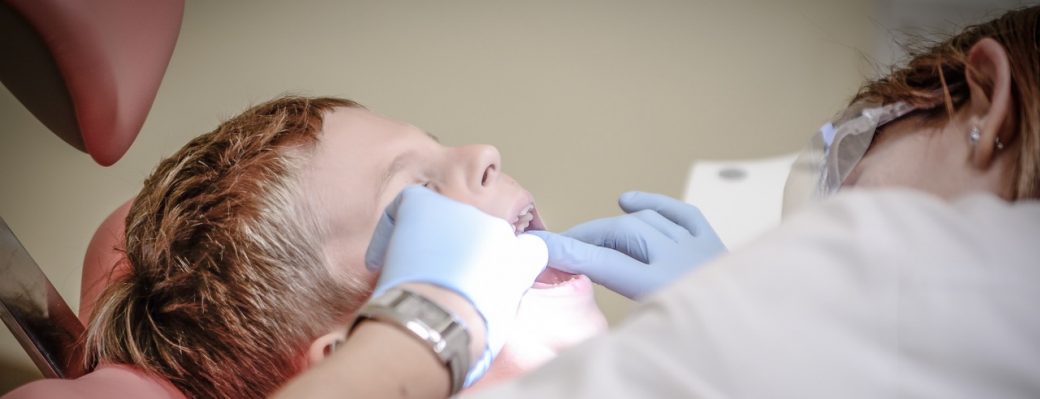Local anesthesia techniques are procedures that dentists use to numb a patient’s teeth and gums. Various techniques can be used, depending on the patient’s needs. This blog post will discuss the different types of dental anesthesia and what you need to know before you undergo one of these procedures.
What type of anesthesia is used for dental work?
Depending on the patient’s needs, various types of dental anesthesia can be used. The most common type of anesthesia is local anesthesia, which numbs a specific area. This type of anesthesia is often used for routine procedures such as fillings or crowns.
Regional anesthesia is another type of dental anesthesia that numbs a larger area. This type of anesthesia is used for more complex procedures, such as root canals or tooth extractions. General anesthesia is the most potent type of anesthesia, and it numbs the entire body. This type of anesthesia is typically used for surgical procedures.
General anesthesia should only be used in cases with a high risk of complications if local or regional anesthesia is used. For example, pregnant patients with heart problems may need to undergo general anesthesia for dental work.
How is dental anesthesia given?
Dental anesthesia can be given in various ways, depending on the type of anesthesia that is being used. Local anesthetics are often given as injections around the teeth and gums. Regional anesthetics are sometimes given as injections, but they can also be delivered through a nerve stimulator device. General anesthetics are typically administered by injection into a vein.
What should I expect after getting dental anesthesia?
Most people feel some numbness after getting local anesthesia. This numbness can last for a few hours after the procedure. The anesthetic solution may cause side effects such as dizziness or drowsiness in some cases. These side effects typically resolve within a few hours.
If you have any questions about dental anesthesia, ask your dentist before your procedure. Dental anesthesia is a safe and effective way to numb teeth and gums for dental procedures.
What are the different techniques for delivering Anesthesia?
The three main types of dental anesthesia techniques are:
-Injectable
-Nerve Stimulation
-General Anesthesia
Injectable anesthesia is the most common type used. It involves numbing a specific area with an injection around the teeth and gums. Nerve stimulation is another type of dental anesthesia that uses a device to numb a larger size.
General anesthesia is the most potent type of anesthesia, and it numbs the entire body. This type of anesthesia is typically used for surgical procedures.
Each technique has its own set of risks and benefits that should be considered before undergoing any dental procedure. Ask your dentist about which option would be best for you based on your individual needs.
What are the different techniques for delivering local anesthesia?
There are three main techniques for delivering local anesthesia:
-Injectable
-Topical
-Nerve Stimulation
Injectable anesthesia is the most common type used. It involves numbing a specific area with needle insertion around the teeth and gums. Topical anesthesia is another type of local anesthesia that uses a cream or gel to numb the skin. This type of anesthesia is often used for procedures such as fillings or crowns. Nerve stimulation is another type of dental anesthesia that uses a device to numb a larger area.
Mandibular nerve block:
The Mandibular nerve block involves the Inferior alveolar nerve blocking, a branch of the trigeminal nerve that anesthetizes the incisive, mental and lingual nerve on that side. The Inferior alveolar nerve block numbs the mandibular teeth, the mucosa, bone, the floor of the mouth and the anterior two-thirds of the tongue.
What is the difference between local and general anesthesia?
Local anesthesia numbs a specific area, while general anesthesia numbs the entire body. General anesthesia should only be used in cases with a high risk of complications if local or regional anesthesia is used—for example, pregnant patients or have other chronic diseases.
How do dentists give Local anesthesia?
Local anesthesia can be given in various ways, depending on the type of anesthesia that is being used. An anesthetic solution is commonly given as injections around the teeth and gums. Dentists may also use nerve stimulators to deliver local anesthetics. This involves using a device to numb a larger area.
What are the risks associated with Local Anesthesia?
The most common risk associated with local anesthesia is that the numbing effect may not last long enough. In some cases, the soft tissue anesthesia may wear off before the procedure is completed. This can cause discomfort and pain for the patient.
Other risks associated with local anesthesia include:
Allergic reaction to the anesthetic
-Soreness around the injection site
-Numbness of lips or tongue
Dental anesthesia techniques for Inferior alveolar nerve block:
-Injectable anesthesia is delivered to the area around the lower teeth and gums.
-A nerve stimulator may be used to help numb the area.
-The anesthetic will cause a temporary loss of sensation in the lower lip, chin, and jaw.
The inferior alveolar nerve:
The inferior alveolar nerve is a branch of the mandibular nerve. It starts its course from the foramen Ovale and enters the mandibular canal through the mandibular foramen. It gives off a small unit, which supplies sensation to the lower teeth.
The inferior alveolar nerve then exits through the mental foramen and divides into two branches: the incisive branch and the mental branch. The incisive branch supplies sensation to the front teeth, while the mental extension provides feeling to the lower lip and chin. The inferior alveolar nerve is anesthetized when administering local anesthesia for mandibular nerve block.
Anterior superior alveolar nerve:
The anterior superior alveolar nerve is a branch of the maxillary nerve. It supplies sensation to the upper front teeth. The anesthetic solution is delivered to the area in front of the upper canine teeth and above the first premolar tooth.
Middle superior alveolar nerve:
The middle superior alveolar nerve is a branch of the maxillary nerve. It supplies sensation to the upper teeth in the premolar and molar regions. The anesthetic solution is delivered to the area above the second premolar tooth.
Posterior superior alveolar nerve:
The posterior superior alveolar nerve is a branch of the maxillary nerve. It supplies sensation to the molars and premolars on both palate sides. The anesthetic solution is delivered behind the last molar tooth on each side.
Maxillary nerve:
The maxillary nerve is a branch of the trigeminal nerve. It supplies sensation to the upper teeth, gums, palate, and side of the nose. The maxillary nerve can be anesthetized when administering local anesthesia for maxillary nerve block. The trigeminal nerve is a big nerve that has many branches.
Facial nerve:
This nerve innervates the muscles of facial expression and the lacrimal and salivary glands. The facial nerve can be anesthetized when administering local anesthesia for buccal nerve block.
What are some of the risks associated with General Anesthesia?
The most common risks associated with general anesthesia include:
-Nausea and vomiting
-Drowsiness
-Sore throat
-Muscle aches
Other rare but serious risks associated with general anesthesia include:
-Allergic reactions to the medication
-Breathing problems
-Heart problems
What are the risks associated with Inferior alveolar nerve block?
The most common risk associated with inferior alveolar nerve block is that the local anesthesia should be delivered at the correct site. If the local anesthesia is not injected in the right spot, it may not work correctly. This could result in pain and discomfort for the patient during the procedure.
Other risks associated with the inferior alveolar nerve block include:
-Allergic reaction to local anesthesia
-Soreness around the injection site
-Numbness of lips or tongue
How will I know if I need dental anesthesia?
Your dentist will be able to tell you if you need local anesthesia for your upcoming procedure. If you are anxious about getting a shot, you can ask your dentist about the various available types of dental anesthesia.
Dental anxiety is common, but there are many ways to overcome it. Talk to your dentist about any concerns you have, and they will be happy to address them.
Dental anesthesia for tooth removal
-The most common type of local anesthesia for tooth removal is an injection around the teeth and gums. The inferior alveolar nerve is blocked in the case of mandibular molars.
-A local anesthetic will numb the area around the tooth that is being removed.
-The local anesthesia will cause a temporary loss of sensation in the teeth, gums, and jaw.
Which nerve is anesthetized for oral surgical procedures?
The inferior alveolar nerve is anesthetized for oral surgical procedures. This nerve provides sensation to the lower teeth, gums, and jaw. The alveolar nerve block makes it easier for the surgeon to extract lower teeth.
Local anesthesia delivery devices:
-Dental syringes are used to deliver local anesthesia around the teeth and gums. The alveolar nerve block is administered the same way.
-The needle is inserted into the gum tissue until it reaches the bone, and the anesthetic solution is delivered.
-Once the needle is in place, the local anesthesia is injected slowly into the tissue.
Buccal nerve block:
The buccal nerve block anesthetizes the facial nerve. This nerve provides sensation to the muscles of facial expression and the lacrimal and salivary glands. The buccal nerve block makes it easier for your dentist to perform procedures on your teeth and gums.
Techniques for regional maxillary anesthesia:
-The maxillary nerve block anesthetizes the maxillary nerve. It supplies sensation to the molars and premolars on both palate sides. The anesthetic solution is delivered behind the last molar tooth on each side.
-The maxillary nerve can be anesthetized when administering local anesthesia for a maxillary nerve block.
-The facial nerve can be anesthetized when administering local anesthesia for buccal nerve block.
References:
https://www.healthline.com/health/dental-and-oral-health/dental-anesthesia
https://www.verywellhealth.com/local-anesthesia-defined-3157110


